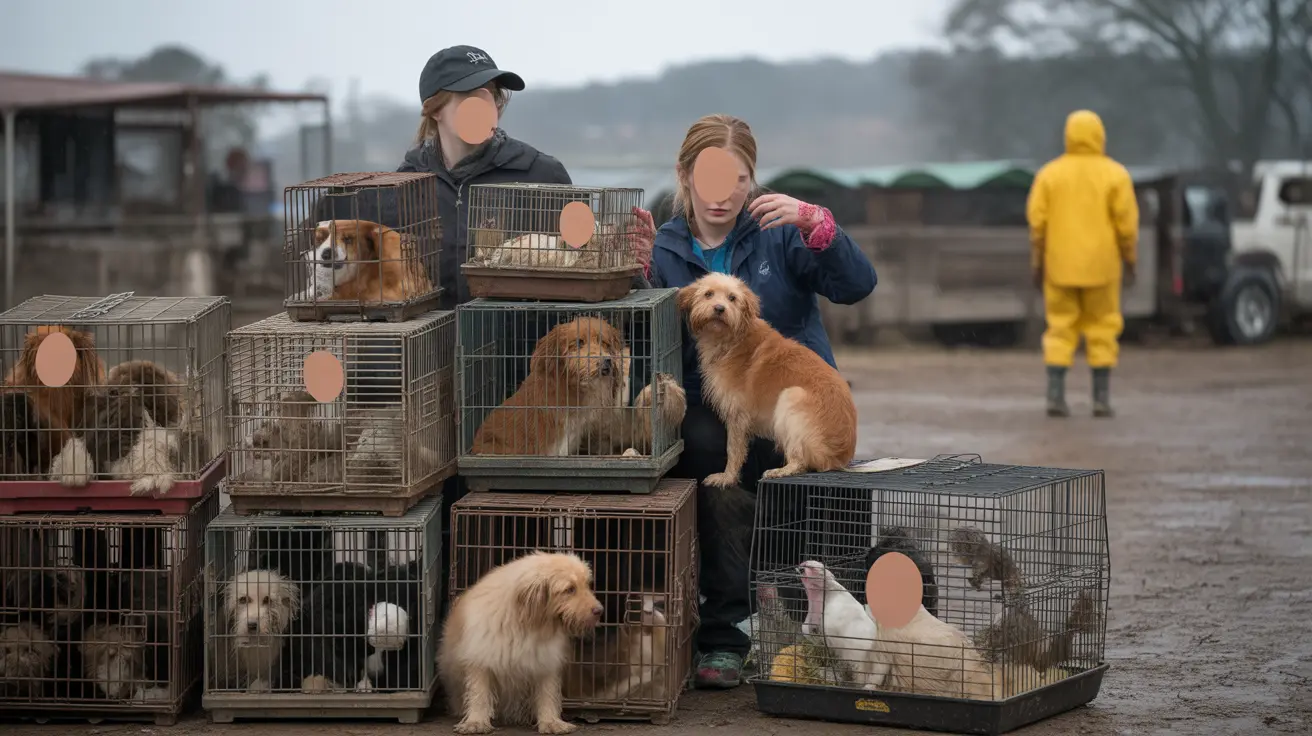In a disturbing case of animal hoarding, authorities discovered more than 200 animals living in deplorable conditions alongside an elderly woman in what officials described as a house of horrors. The animals, found stacked in rusty cages and living in unsanitary conditions, highlight the devastating impact of severe animal hoarding on both human and animal welfare.
The shocking discovery revealed numerous sick and malnourished animals wallowing in their own waste, while the elderly resident was effectively trapped among the creatures and accumulated garbage. This case represents one of the more severe instances of animal hoarding disorder documented recently in the United States.
Understanding Animal Hoarding and Its Impact
Animal hoarding situations like this one often develop gradually, with devastating consequences for both the animals and their caretakers. The combination of overcrowding, inadequate care, and unsanitary conditions creates an environment where disease and suffering become prevalent.
Health Risks in Hoarding Situations
- Exposure to harmful ammonia levels from accumulated waste
- Spread of parasitic infections
- Limited access to proper food and water
- Psychological distress for both animals and humans
- Increased risk of zoonotic diseases
Mental Health and Animal Hoarding
Cases like this often indicate underlying mental health challenges that require professional intervention. Sometimes referred to as Noah Syndrome, animal hoarding disorder is a complex condition that requires a comprehensive treatment approach combining mental health support with animal welfare services.
Warning Signs of Animal Hoarding
- Accumulation of animals beyond caretaking capacity
- Denial about the animals' living conditions
- Deteriorating home environment
- Isolation from family and community
- Resistance to outside help or intervention
Legal Consequences and Animal Welfare
Animal neglect laws provide framework for addressing these situations, though enforcement often requires balancing humanitarian concerns with legal requirements. The focus typically remains on ensuring both human and animal welfare while preventing future incidents.
Animal Hoarding Prevention and Intervention
Preventing similar situations requires community awareness and early intervention. Professional animal hoarding cleanup services, combined with mental health support and monitoring, play crucial roles in addressing these cases effectively.
Frequently Asked Questions
What is animal hoarding and how does it affect both pets and their owners?
Animal hoarding is a behavioral disorder where a person keeps more animals than they can care for properly, leading to animal suffering, unsanitary living conditions, and serious health risks for both the animals and the hoarder.
How can I recognize the warning signs of animal hoarding in someone I know?
Common signs include a large number of animals in poor health, filthy living environments, animal cages stacked or crowded, and the person displaying denial about the animals' conditions or refusing help.
What health risks do hoarded animals face in these extreme conditions?
Animals often suffer from starvation, disease, parasites like fleas or ticks, untreated injuries, dehydration, and exposure to unsanitary, hazardous environments that increase the risk of zoonotic diseases.
The discovery of these 200 animals serves as a sobering reminder of the importance of recognizing and addressing animal hoarding situations before they reach crisis levels. Communities must remain vigilant and ready to provide support when signs of animal hoarding emerge, ensuring both human and animal welfare remain protected.
If you suspect an animal hoarding situation in your community, contact local animal welfare authorities or law enforcement for guidance. Early intervention can prevent suffering and lead to better outcomes for all involved.






